Published January 6, 2023
Precision target spraying with RTK GPS
A Malaysia's palm oil industry is facing losses in production of up to 92% due to the spread of leaf-eating caterpillars and beetles. Find out how Alphaswift’s precision target spraying with RTK GPS could reverse this loss.

Malaysia has a unique geographical location that allows palm oil to really thrive. According to MPOC, there are around 4.49 million hectares of land being cultivated with palm oil trees. Suffice to say, the palm oil industry is one of the major backbones of the national economy. Indonesia, being another country with rich lands and tropical climate, is now the biggest palm oil plantation in the world, with up to 14 million hectares of palm oil cultivated lands.
It is getting more and more difficult to manage palm oil production now because there is an outbreak of leaf-eating caterpillars, or more commonly known as bagworms in the palm oil industry. Actually, there is more than one kind of caterpillar that feeds on palm leaves, and they include bagworms, nettle caterpillars, hairy caterpillars, and other caterpillars (reference). These guys are serious pests and if not taken care of, they can cause up to 50% loss of crop over a period of 2 years. Things are looking bad enough, and there is yet another pest to be introduced, the rhinoceros beetle. They too feed on the young leaves of the palm tree. It is said that the adult beetles can cut through the leaves and boreholes into the crowns. They can populate very quickly and have consistently managed to cause production losses of an average of 40%, but nowadays it has reached up to 92% in the Malaysia (reference).
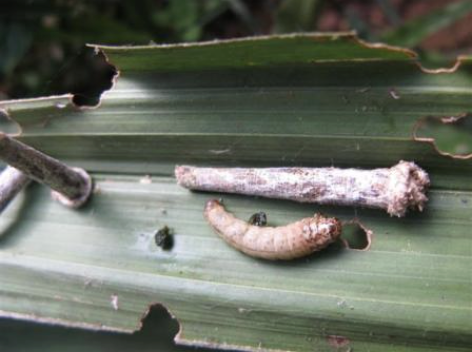 Bagworm (source)
Bagworm (source)
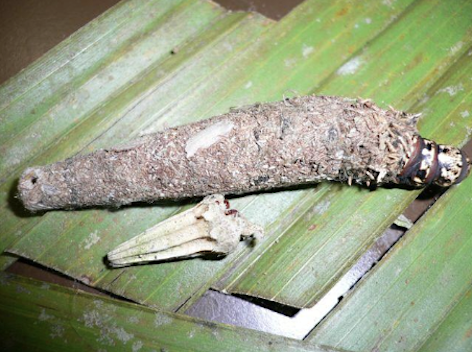 Bagworm
Bagworm
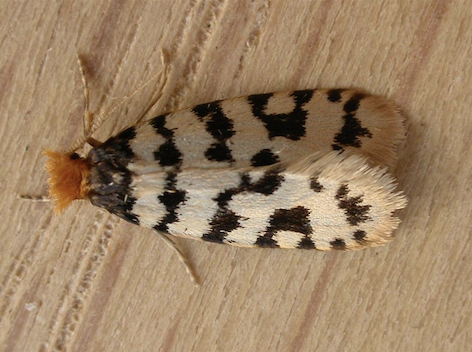 Caterpillar grows up to be a moth
Caterpillar grows up to be a moth
 Rhino beetle (source)
Rhino beetle (source)
Now that we have established that there are uncontrollable pests in the palm oil plantations by natural means, it is crucial to step up and control them via other means. One of the methods that can be used is to spray pesticides on them, eliminating them directly via chemical attacks. It is only effective if the pesticides are applied from the top of the palm oil trees, as the worms and beetles typically hide near the crown. This becomes a difficult task for the conventional manual knapsack sprayer because the operator will be on the ground, it is likely that the pesticides will not be able to reach the top of the trees, and he will just be wasting huge amounts of pesticides by spraying at the wrong places.
 Oil palm being attacked by rhino beetle (source)
Oil palm being attacked by rhino beetle (source)
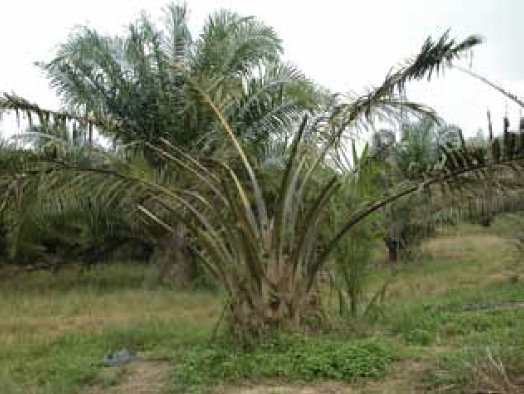 Young oil palm dying due to attack by rhino beetle (source)
Young oil palm dying due to attack by rhino beetle (source)
Naturally, we at Alphaswift have been thinking of ways to solve this problem with our agricultural sprayer drones. We want to eliminate the pests that are hiding on top of the palm trees, and the best way to do that is to spray them with chemicals directly from the top. This poses yet another challenge because the blanket spraying drone which covers every inch of the entire area of the farmland is not suitable for this purpose, we will be wasting so much pesticide, causing pollution and potentially other problems for the plantation. Palm oil trees are planted at a distance of 9 meters between each other, and we want the chemicals to be targeted on the pests only, which reside at the top of the crown.
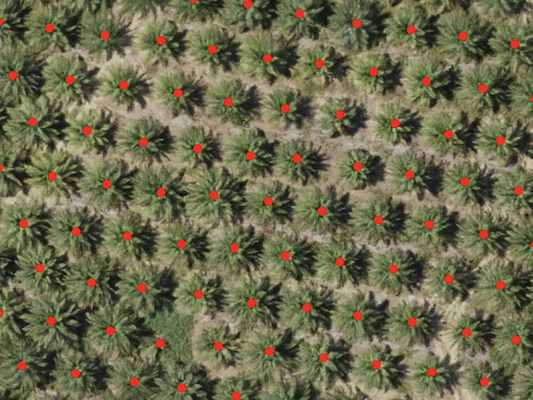 Palm oil trees formation at a typical plantation
Palm oil trees formation at a typical plantation
Instead of blanket spraying (carpet bombing) the pests, we should be doing precision spraying (precision bombing) instead, trying to hit as much pests with minimal damage to other places. This will reduce pollution, reduce pesticide usage, and increase efficiency of the operation.
This will be a 3 step process, as illustrated in the figure below. The first step will be to diagnose the plantation, second is to analyze the condition of the plantation, and the third will be to prescribe the correct type and amount of chemicals to accurately cure the problem.

Mapping the plantations can be done easily nowadays with off the shelf drone solutions. The raw data from the mapping drones will be processed by a standard mapping software that can provide highly accurate location data. The processed images should be analyzed by a qualified agronomist to correctly identify the root cause. Finally, the prescription will be done by our precision spraying drones, equipped with state of the art technology.
With our precision spraying drone, we can now carry the correct blend of chemicals, travel directly to the targeted trees and then spray the exact amount of pesticide needed on top of the trees. The positioning of the drone is guided by an RTK GPS (technical details), therefore the accuracy is in the centimeter range. We have also developed a routing algorithm that knows the best way to travel in between the trees to achieve the shortest travel distance.
Here is the video of our first test of the RTK GPS system working with the precision spraying drone.
We are hopeful that this technology can eliminate pests significantly, and help bring the palm oil production back to the highest efficiency. Contact us for more information on how this technology can help you. We want to help!